The largest operating centralized exchange in 2025, Binance is packed with trader-specific features. Yet, Binance is not just a trading platform offering indicators, trading tools, and tradable assets. It is also a one-stop on-ramping/ offramping platform, helping users convert their hard-earned money to crypto and vice versa. With Binance P2P, users can directly buy and sell crypto in an open market. This Binance P2P guide takes you through how the process works and how to navigate the P2P space safely.
KEY TAKEAWAYS
•Binance P2P allows users to trade cryptocurrencies directly with others, with Binance acting as an escrow to ensure secure transactions.
•Users can improve their trading experience on Binance P2P by verifying their accounts, using secure payment methods, and checking user ratings to avoid scams.
•Despite its benefits, Binance P2P comes with risks like potential scams and unclear tax obligations, so users should trade cautiously and comply with local regulations.
What is Binance P2P?
P2P stands for peer-to-peer. P2P crypto transactions signify the transfer of assets between two people without a middleman. Even though Binance is typically a middleman when you execute spot and limit trades, charging marker and taker fees along the way, it has a separate P2P section to fulfill the individual-specific crypto supply and demand.
Think of P2P as selling your crypto directly to a person and receiving cash (bank transfers) in return. Here’s how the process is initiated on any peer-to-peer crypto exchange:
- Person A wants to send crypto to person B: Both have digital wallets set up.
- Transaction details: Person A enters how much crypto they want to send and Person B’s wallet address.
- Verification on blockchain: The transaction is broadcast to the blockchain network, where it’s verified by other users (miners or validators).
- Person B receives crypto: Once verified, the transaction is added to the blockchain, and the crypto appears in Person B’s wallet.
This is what a simplified version of a peer-to-peer transaction looks like.
What is Binance’s role in facilitating P2P transactions
Even though the concept of P2P holds for any peer-to-peer crypto exchange, Binance offers additional anonymity and a wide selection of tradable assets. You can buy BTC and other crypto assets using direct payment methods or sell USDT, BNB, or a host of other cryptos and get paid directly into your e-wallet or bank account.
Sponsored
Binance P2P buying and selling makes life easier for users who receive their salary or fee in crypto, want to initiate quick trades, offload assets quickly, and make quick crypto purchases to ride market sentiments, among other things.
Of course, Binance isn’t the only P2P crypto exchange in town. Several Binance alternatives include the likes of OKX, Paxful, and Hodl Hodl.
Understanding Binance P2P architecture
This Binance P2P guide/explainer will highlight how a few simple components comprise the entire P2P architecture. Here are the underlying elements.
The user account
To use Binance’s P2P functionality, you first need to create a basic user account. Note that peer-to-peer account setup requires stringent KYC verification, regardless of whether you are a buyer or a seller.
Advertisements or the lack thereof
You can enhance your Binance P2P buying, selling, or rather trading profile by relying on ads. These advertisements position your P2P need at the top of the list, allowing buyers and sellers to locate you quickly.

Notably, placing ads comes with a few conditions:
- Account requirements: You must be a registered user for more than 30 days, complete identity verification, and enable SMS authentication.
- Trading history: You must have completed at least 20 P2P orders and traded with 10 unique counterparties.
- Order completion rate: Your 30-day P2P order completion rate must be at least 80%. If it drops below this, you may not be able to post new ads, though your existing ads will remain visible.
Did you know? When setting up your advertisement, you can choose between a “Buy” or “Sell” ad type, select the crypto asset and fiat currency, and choose between fixed or floating pricing. Additionally, you can specify the total trading amount, order limits, and up to three payment methods. You also have the flexibility to add terms and an auto-reply message when users respond to your ad.
As for the changes, new trade advertisements can be subjected to transaction fees, anywhere between 0 and 0.35%, depending on the pair’s liquidity. In Binance P2P, the pair signifies the crypto you wish to trade and the currency you wish to offload or purchase it in.

Escrow
The entire buyer-seller interaction on Binance is managed by an escrow. Here is how it works:
Once a buyer accepts an offer, the seller’s cryptocurrency is automatically locked in Binance’s escrow service. This escrow holds the crypto securely until the transaction is completed, ensuring that the seller does not lose their crypto if the buyer fails to pay.
Payment processors
Binance P2P payment methods range from standard bank transfers to UPI (India-specific) to e-wallets and others.
Kashif Raza, Founder of Bitinning: X
As someone looking to buy or sell USDT or any other cryptocurrency, you can tweak and choose the Binance P2P payment methods depending on your region of operation.
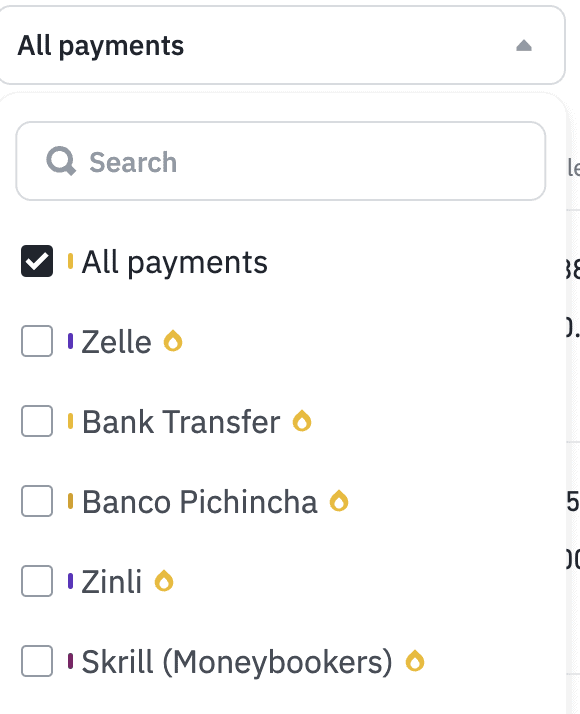
The fund-release mechanism
The seller leads the fund-release mechanism and must confirm the payment. Once done, the Binance P2P escrow releases the digital assets to the buyer’s wallet.
Here is how the process works:
Sponsored SponsoredWhen you initiate a transaction on Binance P2P, the crypto that’s being sold is temporarily transferred to Binance’s escrow service. This secure holding continues until the buyer has paid and confirmed it within the platform.
Once the seller confirms receiving the payment, Binance releases the cryptocurrency from escrow to the buyer. If any disputes arise, either party can initiate an appeal, which leads to an investigation by Binance’s customer support to resolve the issue and decide the rightful owner of the funds.
The escrow mechanism functions by automatically reserving the cryptocurrency when an advertisement for selling crypto is posted. This amount is deducted from the seller’s funding wallet and held securely by Binance. If a buyer marks a transaction as paid but fails to transfer the funds, or if there’s any other dispute, the seller can appeal, and Binance will hold the crypto in escrow until the issue is resolved based on the provided evidence.
This escrow system ensures that transactions are safe and minimizes the risk of scams and theft, which is crucial given the irreversible nature of cryptocurrency transactions. The service also incorporates identity verification measures to ensure that all users trade under their true identities, enhancing the platform’s overall security.
Dispute resolution
In cases where there is a dispute — such as a buyer claiming that the payment was made but the seller not releasing the cryptocurrency — the involved parties can file an appeal.
Other concerns like bank account freeze, chargeback placements, and more can also be raised using Binance’s dispute resolution mechanism.

Binance’s customer service then steps in to resolve the dispute based on evidence provided by both sides, such as payment receipts or chat logs.
Ratings and feedback
If you want to buy or sell USDT or any other crypto, you should check the feedback and rating before proceeding. You can find the details by clicking on the buyer profile.
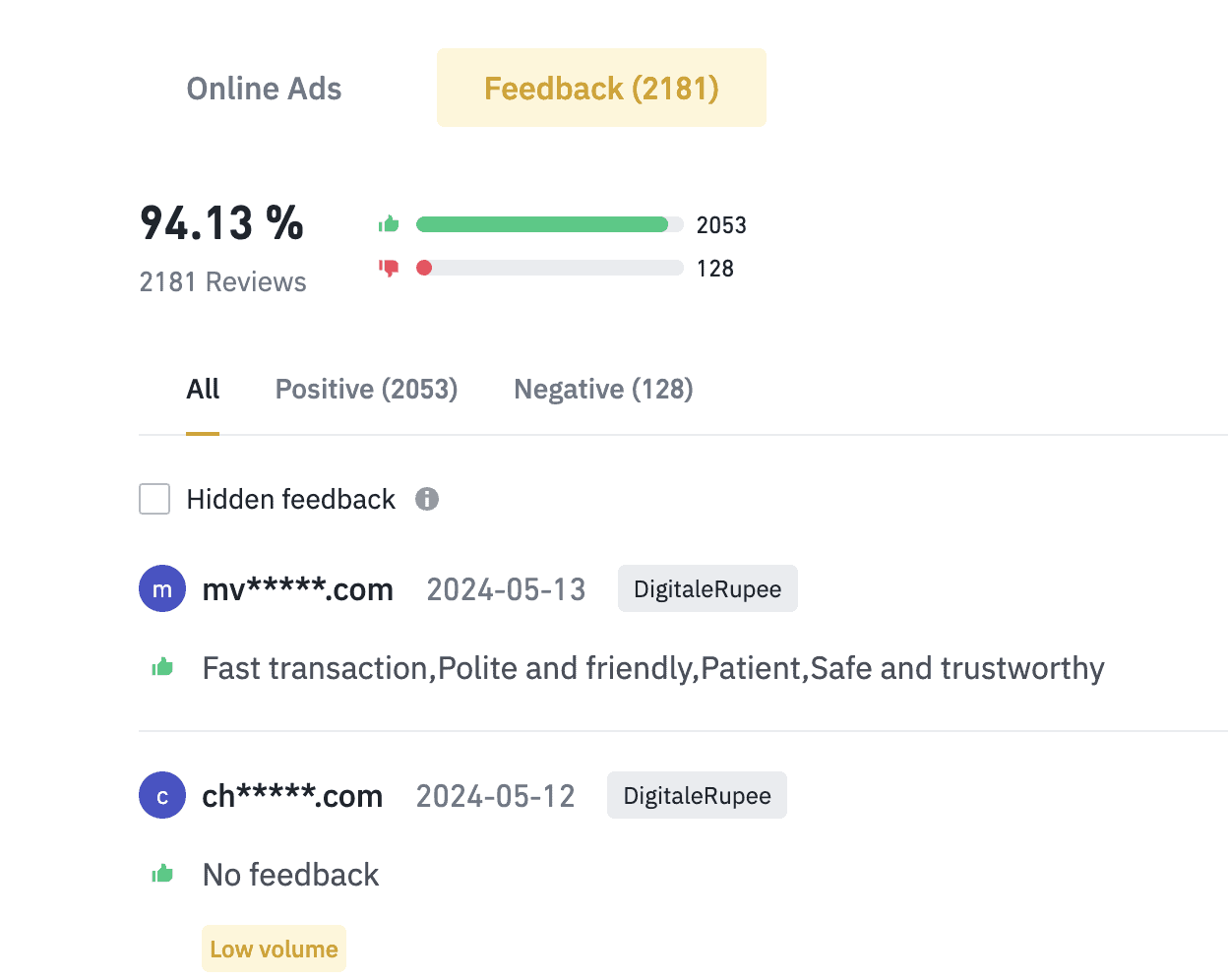
Order types
The P2P page also has other tabs — Express, Block, Cash, and P2P. Each refers to a different kind of peer-to-peer cryptocurrency order type.
Express zone
The P2P Express Zone simplifies the trading process by allowing you to place orders quickly by entering the fiat amount you want to buy or sell. The system then matches you with the best available order from a verified merchant. This method best suits crypto novices and those starting out their P2P journey.

Block trade zone
The Block Trade Zone is for users interested in making large-volume trades. This zone ensures that such trades are handled securely, typically involving verified merchants known as block traders.
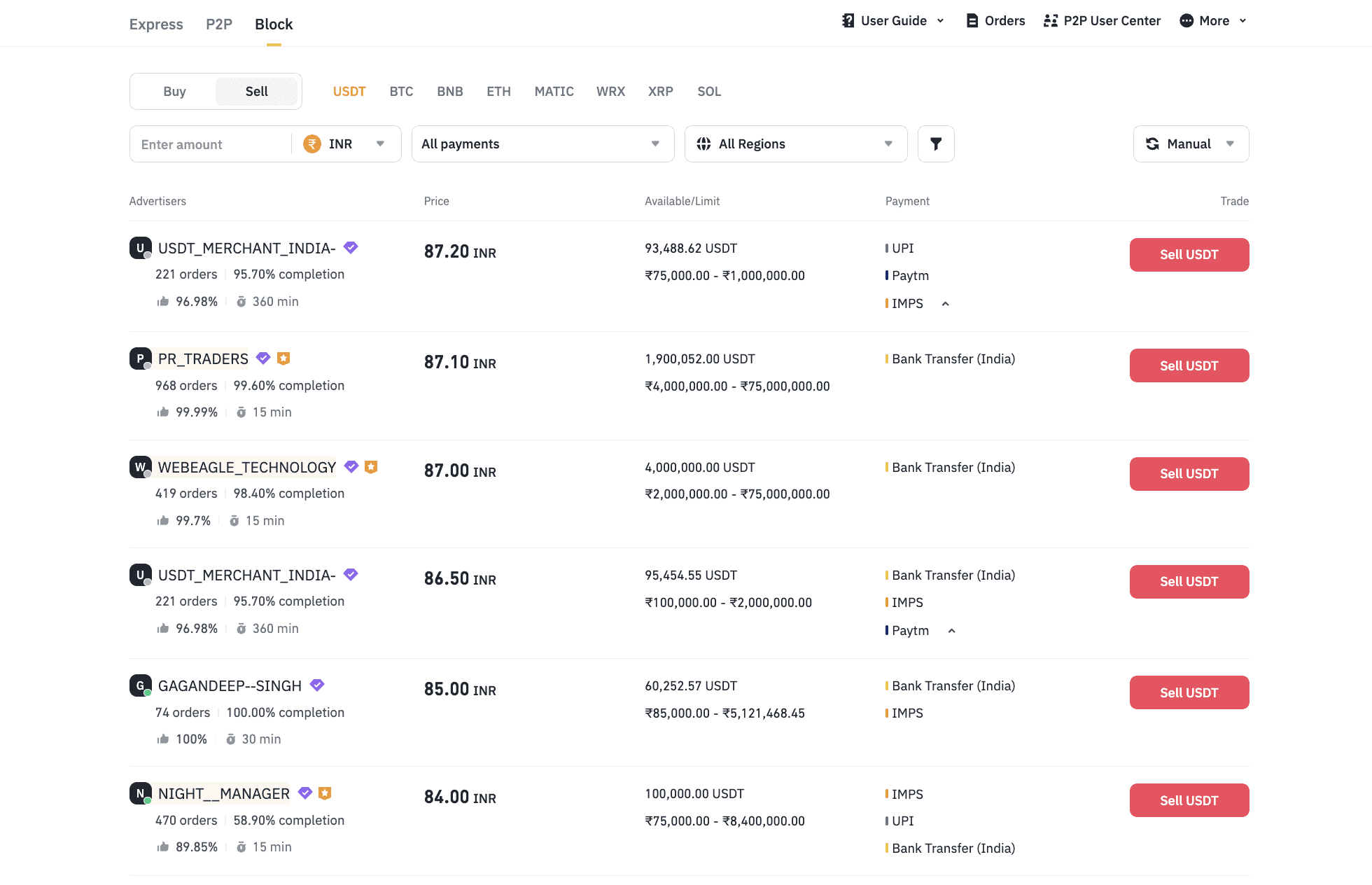
Cash zone
At some specific locations, certain buyers might provide cash-based selling facilities.
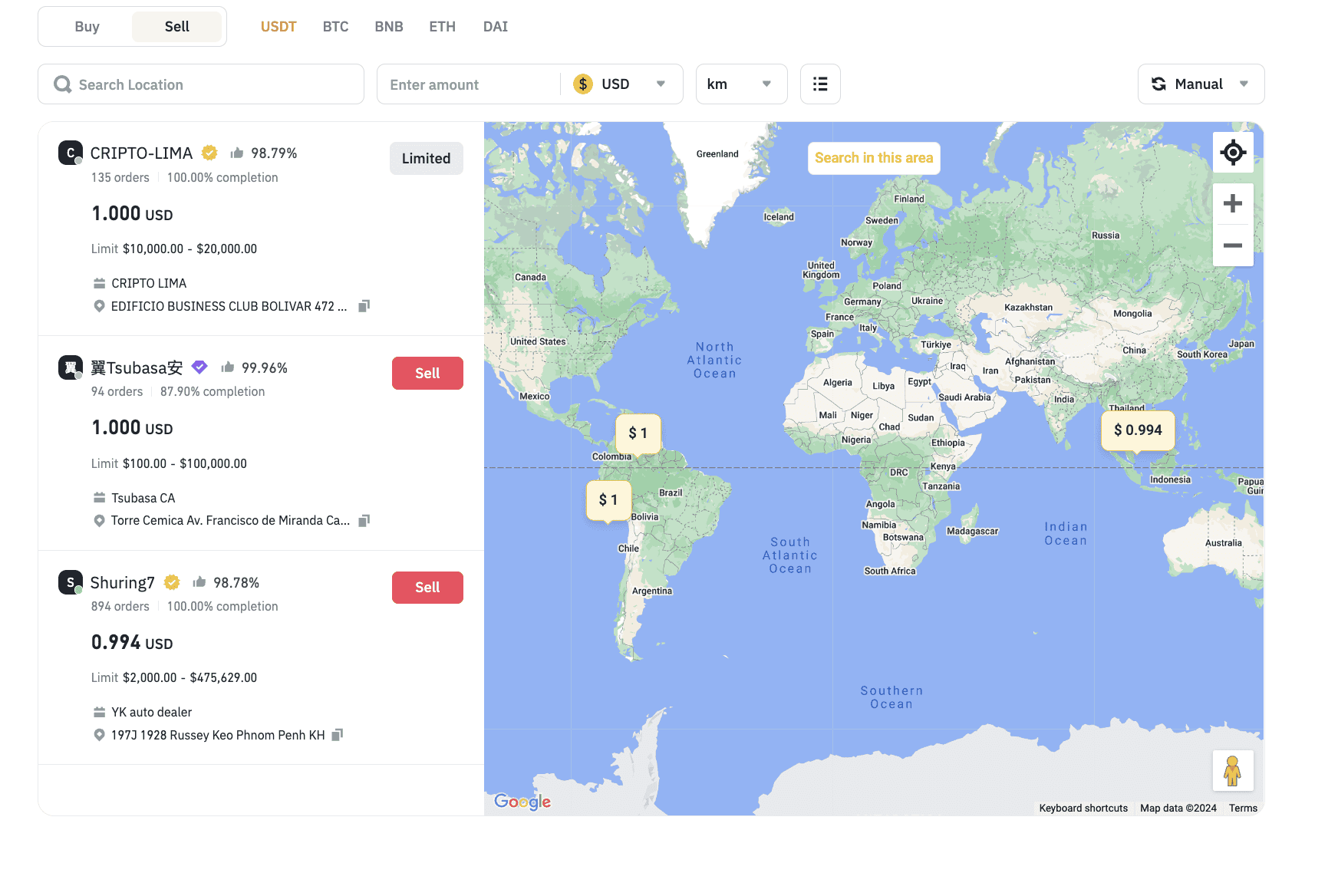
Cash trades: Binance P2P
However, you must deal in a safe environment to avoid getting scammed.
Binance P2P guide: How it works
It is important to check how all these elements pertaining to the Binance P2P architecture work in unison. Here are the steps to consider:
- Start by creating and logging into your exchange account and heading to the “Trade” section.
- From there, select P2P as the preferred mode.
- The P2P window will automatically pick your region from your account history and display all the relevant crypto assets you can buy or offload using P2P.
- You can enter the amount to buy and sell, your choice of crypto, and payment type, and head straight to trading.
Binance P2P buying: the process
If you want to buy crypto using the Binance P2P interface, you can click on the “Buy” tab, and at first, you will see the advertisements. If you like an offer posted by the seller — preferred rates and payment methods — you need to hit the “Buy” button against the seller’s name.
Do note that as the buyer, you can raise a cancellation request first.
You can then verify the seller credentials, maximum amount, past orders, and more on their profile page.
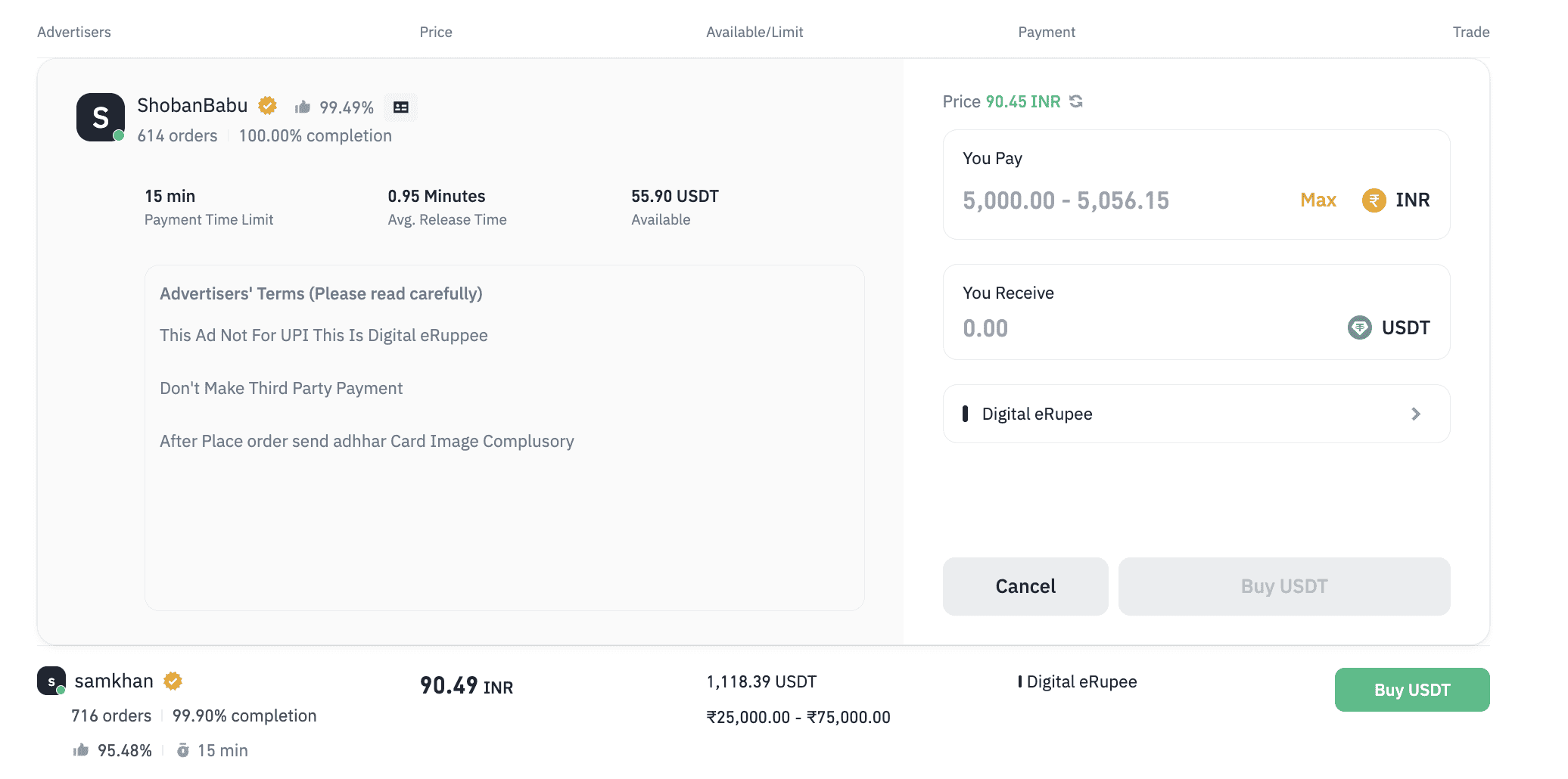
Binance P2P seller credentials: Binance
Binance P2P selling: the process
If you want to sell, you need to connect with a buyer. If you plan to sell USDT or any other supported crypto, you are the one in charge of the assets. Only when you confirm receipt of the funds will the buyer receive the relevant digital assets. Before that happens, the cryptocurrency is held securely by the Binance Escrow.

Buyer credentials: Binance P2P
Features of Binance P2P: Enlisting the benefits
The Binance P2P interface comes with a host of features. Some of the most obvious ones include:
- Diverse cryptocurrency support: Binance P2P helps trade multiple digital currencies, including Bitcoin, Ethereum, and Tether.
- Extensive payment options: Over 700 payment methods supported for flexible transactions.
- Worldwide access: Available in many countries with support for various fiat currencies.
- Secure escrow service: Ensures safe transactions by holding crypto until both parties fulfill their commitments.
- No buyer fees: Buyers incur no transaction fees on the platform.
- Strict user verification: Binance adheres to rigorous KYC and AML guidelines to ensure security and reliability within its community.
- Rating and feedback system: Users can rate their transaction experiences with others, contributing to a trustworthy community environment.
- Quick conflict resolution: Binance provides mechanisms to address and resolve disputes between buyers and sellers efficiently.
- Flexible trading: The platform offers the flexibility for users to create their own trading ads or respond to those posted by others.
You can consider these features as the Binance P2P trading benefits.

Benefits: Binance P2P
Disadvantages of Binance P2P
P2P transactions seem easy. Yet, they have their own share of pitfalls. Here’s what to be aware of:
Increased risk of scams
- Bank account freezing: Some users have reported their bank accounts being frozen after conducting transactions.
- Chargeback requests: There is a risk of fraudulent chargebacks wherein a buyer reverses the transaction after receiving the cryptocurrency.
- Payment scams: Traders might encounter scams involving fake or altered payment confirmations, leading to losses.
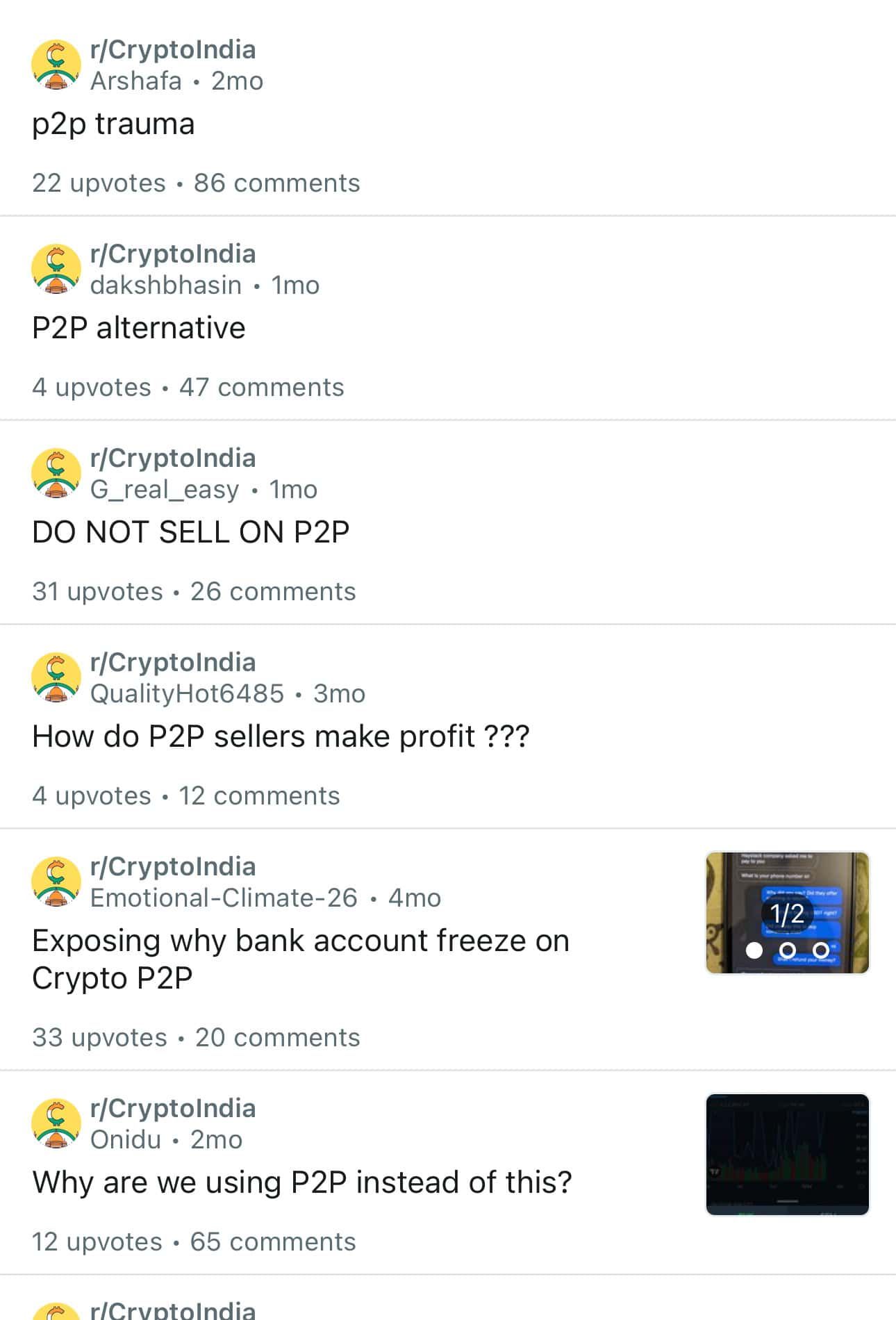
Binance P2P explainer and a growing number of scams: Reddit
Genuine P2P concerns:
Lack of tax-based clarity
Tax obligations for P2P transactions can be unclear and vary by jurisdiction, complicating compliance for users who may not understand their tax liabilities from crypto trading. For instance, if you are from India and filing taxes, you must report the nature of your crypto dealings, including P2P.
CA Sonu Jain, a crypto tax specialist, spoke with BeInCrypto about tax-specific approaches toward P2P trading and how an average trader could navigate these scam-filled waters.
“Investors who are engaged in P2P trading should be cautious when dealing with unknown individuals online.
Investors in India, for example, can take some of the below steps to mitigate the risk of fraud:
- Collect KYC documents including PAN, Aadhaar, Live Photo with date
- If you are making a purchase in P2P, then ensure you deduct TDS & deposit it with the Income tax department using Form 26QE.
- Always cross-verify the name & address on Aadhaar with Bank statement
- Cross-verify the Live Photo with the photo on Aadhaar.
These steps although may sound lengthy and difficult, but they will help you stay away from scammers & deal with genuine Investors.”
CA Sonu Jain, Chartered Accountant: BIC
Longish appeals
In some cases, Binance hasn’t fully cooperated with the authorities to quell concerns related to anti-money laundering and scams.
Several subsidiaries like the Binance U.S. may have P2P restrictions on them due to (a lack of) regulatory oversight. As a buyer or seller, you should take note of this before proceeding.
How to initiate P2P trades safely and successfully on Binance
In the P2P space, security must be a top priority. Here are a few safety tips to follow:
- Use verified accounts with completed KYC verification.
- Check user ratings and trading history.
- Communicate clearly about payment details and trading terms.
- Follow secure and traceable payment methods.
- Be cautious with high-value trades; consider smaller increments.
- Report suspicious activity to Binance support.
- Stay informed on security practices and scam techniques.
- Adhere to local regulations for crypto transactions.
Now let us dive deeper into each strategy:
- Use verified accounts: Always trade with users who have completed the necessary KYC (Know Your Customer) verification. Verified accounts are generally more trustworthy. Also, verify if the payment you receive for selling cryptocurrency is from the account you are interacting with in Binance. Never accept third-party payments or report them immediately.

Credentials and feedback: Binance P2P
- Check user ratings and history: Review the trading history and ratings of potential trading partners. Prefer users with high ratings and a substantial number of successful transactions.
- Communicate clearly: Use the platform’s communication tools to clarify payment details and trading terms before initiating a transaction. Clear communication can prevent misunderstandings.
- Follow secure payment methods: Opt for secure and traceable payment methods. Be wary of payment methods that are reversible or commonly associated with fraud. For instance, card-based payments are prone to unscrupulous chargeback requests.
- Be cautious with high-value trades: For large transactions, consider conducting them in smaller increments to mitigate risk.
- Report suspicious activity: Immediately report any suspicious behavior or transactions to Binance support for timely intervention.
- Stay informed: Keep updated on the latest security practices and potential scam techniques commonly seen in P2P trading.
- Adhere to local guidelines: Be aware of and comply with local regulations concerning crypto transactions to avoid legal issues.
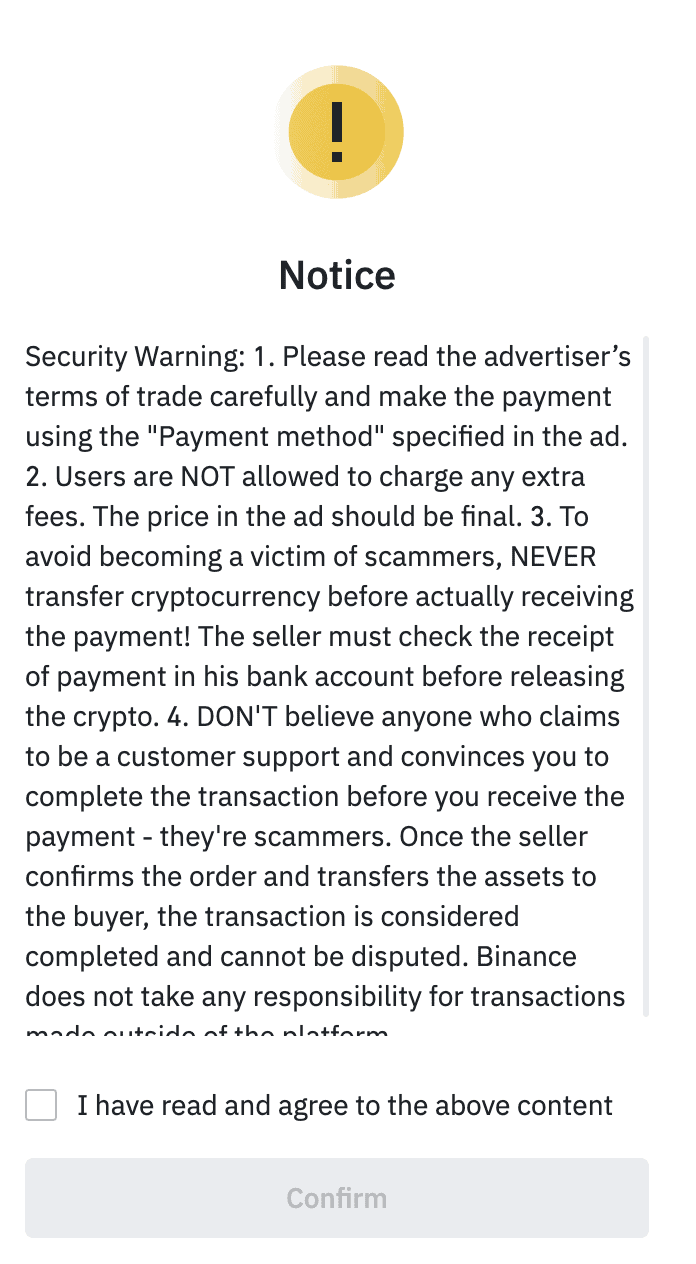
What does the future hold for Binance P2P?
This Binance P2P guide shows the ease with which users can conduct peer-to-peer cryptocurrency transactions. However, in light of the growing prevalence of scams and the need for greater regulatory innovation, we expect this peer-to-peer crypto exchange to move to offer additional security standards, like anomaly detection and enhanced encryption. Furthermore, in the future, Binance is likely to increasingly rely on AI for more optimized order-matching experiences, especially for crypto newcomers.

